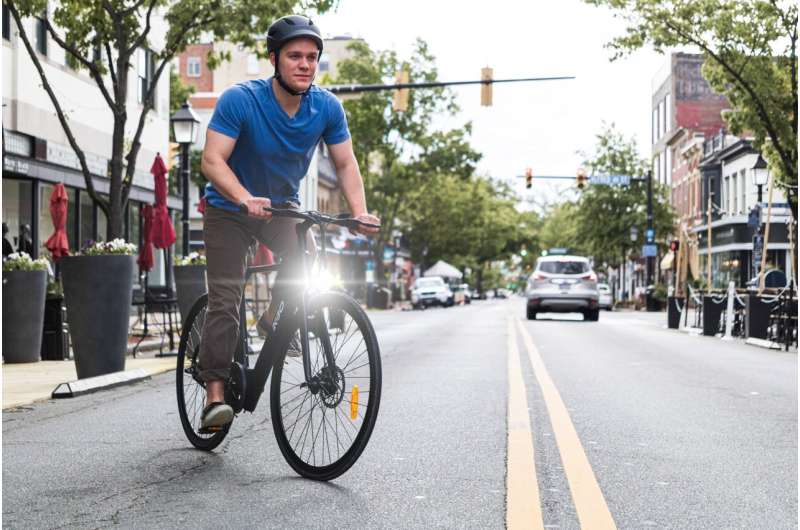New study on expectations and reality of safe overtaking maneuvers in bicycle traffic

Dangerous situations can develop when cyclists are overtaken by cars. How threatened or safe cyclists feel during an overtaking maneuver depends on the type of road. They expect to be safer on roads with a speed limit of 30 kilometers per hour (kph), as well as on living streets, bike streets, and roads with cycle lanes. If cars are allowed to drive faster and infrastructure for cyclists is absent, cyclists expect more dangerous overtaking maneuvers. But in reality, the passing distance of cars are actually contrary to this subjective impression of safety. On streets with reduced speed limits or bikeways, cyclists are passed with just as little or even less space than on other roads. This is shown in a study carried out by Dr. Rul von Stülpnagel of the Institute of Psychology and Nils Riach and Rafael Hologa of the Institute of Environmental Social Science and Geography of the University of Freiburg. The results have been published in the specialist journal Transportation Research Part F: Psychology and Behaviour.
Closer overtaking margins than expected
The University of Freiburg researchers showed cyclists images of different types of urban roads and let them estimate how safe overtaking maneuvers were there. The researchers also used a sensor mounted on a bicycle to measure the actual passing distance in the same areas. Their result: Only 30% of passing cars complied with the legally prescribed minimum margin of 1.5 meters.
On some of the roads subjectively perceived to be safe, the overtaking margins were in some cases especially small. "Especially on roads with calmed traffic and on cycle lanes, bicyclists are passed more closely than they themselves expect," says von Stülpnagel. Among the reasons for this could be that such roads are often tight, but narrow cycle lanes give the impression that drivers may only use the space in the road up to the line marking the lane, even if they are not maintaining the legal minimum of space when overtaking.
Cycle lanes are nevertheless sensible
"Our results don't speak against speed limits and cycle lanes," emphasizes von Stülpnagel. He continues, low speeds can reduce the consequences of accidents, and infrastructure for cyclists makes them more visible in urban traffic. This could also be an explanation for the subjectively perceived feeling of greater safety on the part of cyclists. Nevertheless, it was important to recognize that this sense of safety frequently did not correspond to the objectively measured margins during overtaking.
Better to build wide cycle lanes—or physical separations
Von Stülpnagel explains that the results could have an influence on traffic planning in the future. "Whenever it's possible, bicycle lanes should be made so wide, that cars are able to maintain the minimal passing distance of 1.5 meters without having to swerve from their path," he says. Positive effects, adds von Stülpnagel, could be expected particularly when bicycle paths are physically separated from the roads. "Our study results show that such structural boundaries can increase the perception of safety as well as the passing distances," he concludes.
More information: Rul von Stülpnagel et al, Cars overtaking cyclists on different urban road types—Expectations about passing safety are not aligned with observed passing distances, Transportation Research Part F: Traffic Psychology and Behaviour (2022). DOI: 10.1016/j.trf.2022.07.005




















